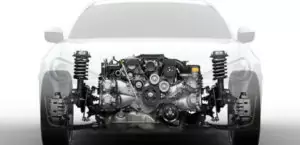The 2.0-liter Alfa Romeo 937A1000 or 156 2.0 JTS engine was produced from 2002 to 2010 and was installed on such popular models of the company as 156, GT, GTV and similar Spider. Such a unit is essentially a modification of the Twin Spark engine with direct fuel injection.
The JTS-engine series: 937A1000, 939A5000, 939A000.
Specifications
| Production years | 2002-2010 |
| Displacement, cc | 1970 |
| Fuel system | direct injection |
| Power output, hp | 165 |
| Torque output, Nm | 206 |
| Cylinder block | cast iron R4 |
| Block head | aluminum 16v |
| Cylinder bore, mm | 83 |
| Piston stroke, mm | 91 |
| Compression ratio | 11.3 |
| Features | DOHC |
| Hydraulic lifters | yes |
| Timing drive | belt |
| Phase regulator | VVT at the intake |
| Turbocharging | no |
| Recommended engine oil | 10W-40 |
| Engine oil capacity, liter | 4.4 |
| Fuel type | petrol |
| Euro standards | EURO 4 |
| Fuel consumption, L/100 km (for Alfa Romeo 156 2003) — city — highway — combined |
12.2 6.7 8.6 |
| Engine lifespan, km | ~180 000 |
| Weight, kg | 150 |
The engine was installed on:
- Alfa Romeo 156 (Type 932) in 2002 – 2005;
- Alfa Romeo GT II (Type 937) in 2003 – 2010;
- Alfa Romeo GTV II (Type 916) in 2003 – 2005;
- Alfa Romeo Spider V (Type 916) in 2003 – 2005.
Disadvantages of the Alfa Romeo 937A1000 engine
- The engine has all the problems of direct injection engines such as soot on the valves;
- Also, an oil burner is often found here due to the rapid wear of the piston group;
- The motor is demanding on lubrication or the phase regulator and oil pump will not last long;
- The drop in oil pressure in the system significantly reduces the resource of the camshaft cams;
- Monitor the condition of the balancer belt, if it breaks, it falls under the timing belt.






